Dog dryers thoroughly dry pets’ bodies after shampooing. A variety of products are available, including those that utilize a stand for hands-free drying and brush-type dryers. Some are designed to supply a temperature and sound that dogs do not mind, and many people may not know what to search for when choosing a dryer. Therefore, we would like to explain the necessity of a dog dryer and how to use one properly.
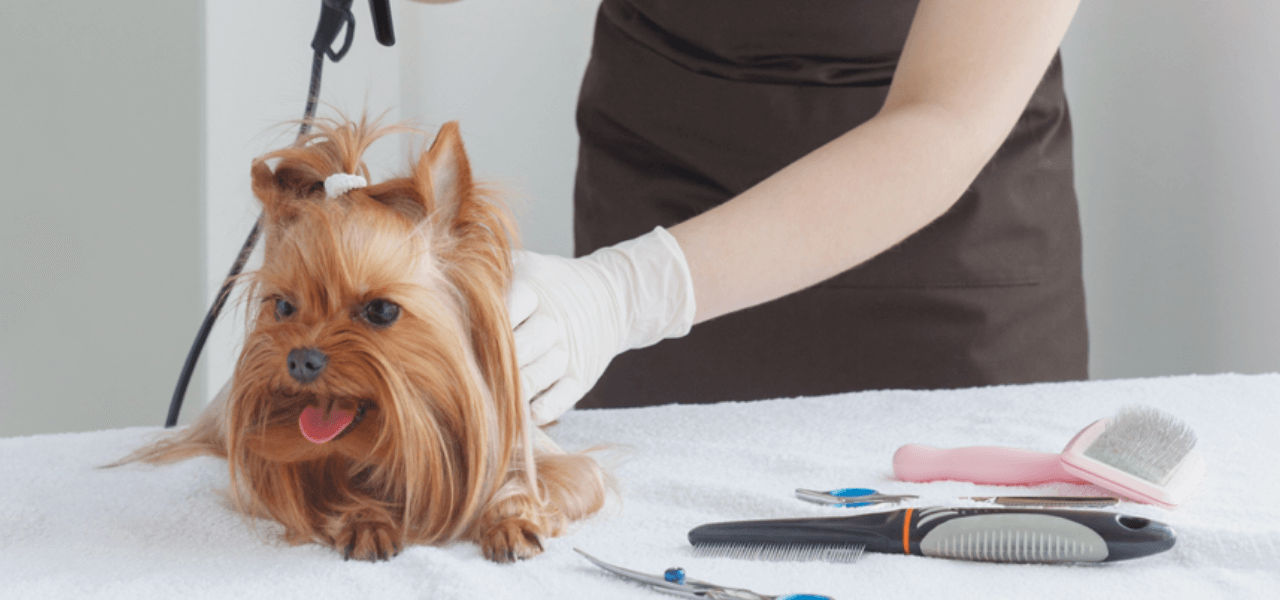 Necessity of Dog Dryers
Necessity of Dog Dryers
Some dog owners use human hair dryers to dry their dogs, but this is not recommended considering the dog’s skin and coat. Dogs’ skin is 1/3 to 1/5 the thickness of human skin, so positron emission tomography dryers are set at 20 to 40°C lower temperatures than those for humans.
When using a human hair dryer, the heat must be taken into consideration, which often takes more time. We recommend buying a pet dryer for pets, not only for safety, but also to save time.
How to Select a Dog Dryer
The most important factor is ease of use
While quick-drying performance is essential for a hair dryer, the first thing to consider is that it should be easy for the owner to use. To begin with, when drying, you basically need to brush while drying. Brushing prevents tangling and pilling of fur, and also allows air to penetrate deep into the fur, resulting in a faster drying time.
A stationary product is easier for pet owners to use because they can brush their dogs while holding them down with one hand, making it easier for them to dry their dogs. This makes it easy to use even for dogs that move around while you are working, since both hands are free.
Among all types, the best type is one that allows flexible movement of the air outlet
We advocate a stand-type dryer that allows you to change the angle of the air outlet to your liking. If it can only waste at a fixed angle, if it can be angular in ternary, or if stairs simply cannot blow at the desired point, it may be difficult to use. And if the air outlet can be moved flexibly, it will be easier to direct the air to the field you want to dry, and it will also be easier to adjust the size of the dog and its posture when drying. If you pick out one that can be angled at least 180 degrees, you will be able to finish drying your dog smoothly.
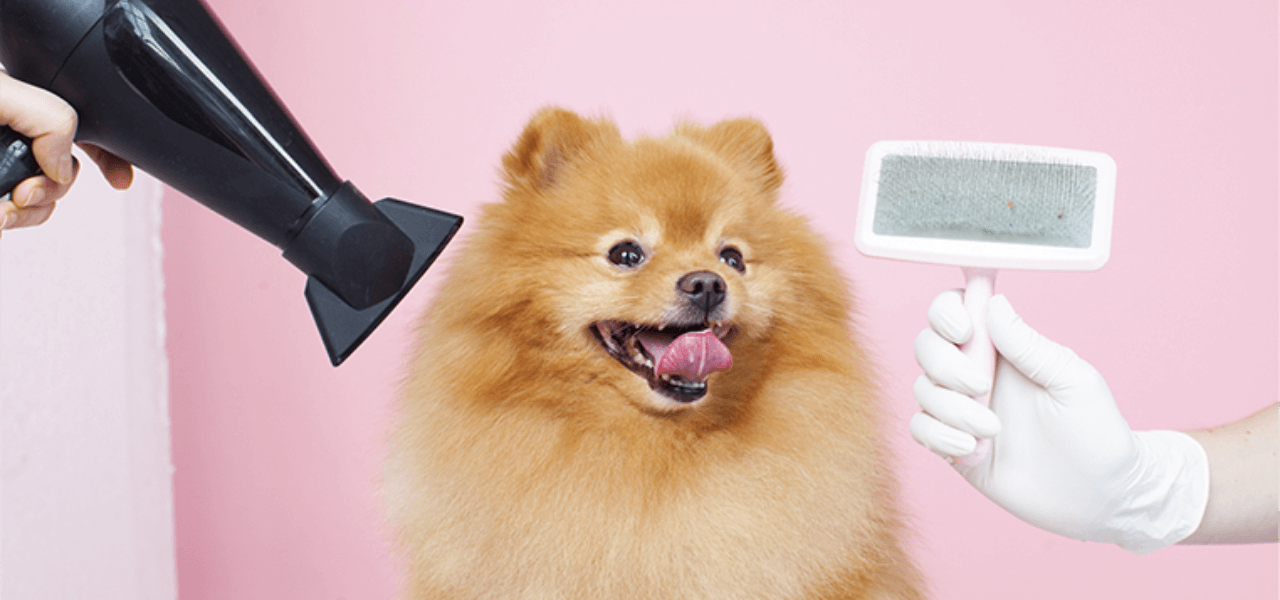 Choose a blower for large dogs or those with a lot of fur
Choose a blower for large dogs or those with a lot of fur
As mentioned above, a blower is a tool that uses a large amount of air flow to squander irrigate from the pelt to dry it. In umpteen cases, products for professional use are oversubscribed for general household use, and only if blowers that produce warm air are selected for this content.
Because the powerful wind blows out the moisture, electric fan products dominated the top of the list in the quick-drying verification. This product will be useful for owners of dogs that take a long time to dry, such as double-coated dogs with heavy coats, large dogs, etc. It is likewise recommended for owners of multiple dogs who need to reduce the drying time per dog as much as possible.
However, the disadvantage is that the wind and loud noise it produces can be easily disliked by dogs. Also, it may be dangerous for moderately sized dogs that weigh less or have less strength to stand on it, so it is necessary to fully consider the dog’s personality and physique.
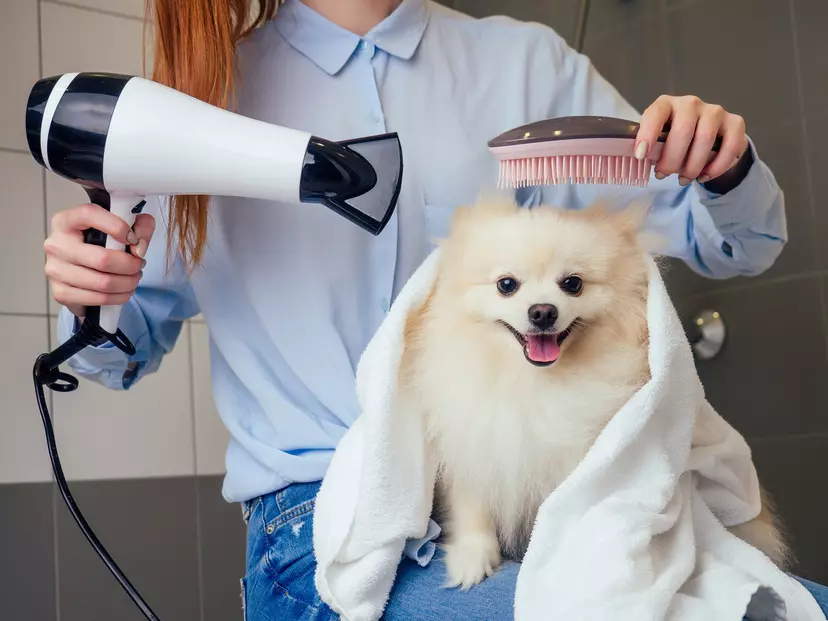 For dog who do not like hair dryers, choose one that is quiet and does not get hot easily
For dog who do not like hair dryers, choose one that is quiet and does not get hot easily
80 dB or lower
One of the main reasons why dogs dislike hair dryers is the loudness of the sound. If your dog has ever shown surprise or barked in excitement as soon as you turned on the hair dryer, this is a point you should be aware of.
However, dog dryers tend to be relatively loud relative to the senior high school air volume to compensate for the low temperature. We recommend that you choose a dog dryer with excellent quietness, aiming for 80 dB or fewer, which is described as being quieter than a homo dryer.
One with fine settings for temperature and air volume
The most likely future cause of a dog’s reluctance to use a hair dryer is that the dog feels the heat from the dryer is too hot. No matter how low the temperature is set, depending on the condition of the dog’s skin, how it is dried, and how long it takes to dry, it is possible that the track may feel hot.
Owners of dogs that have shown signs of reluctance to be dried or dogs with delicate skin need to be concerned. It is recommended to choose a drier with ticket control buttons for temperature and air intensity so that the increase in heat can be controlled.
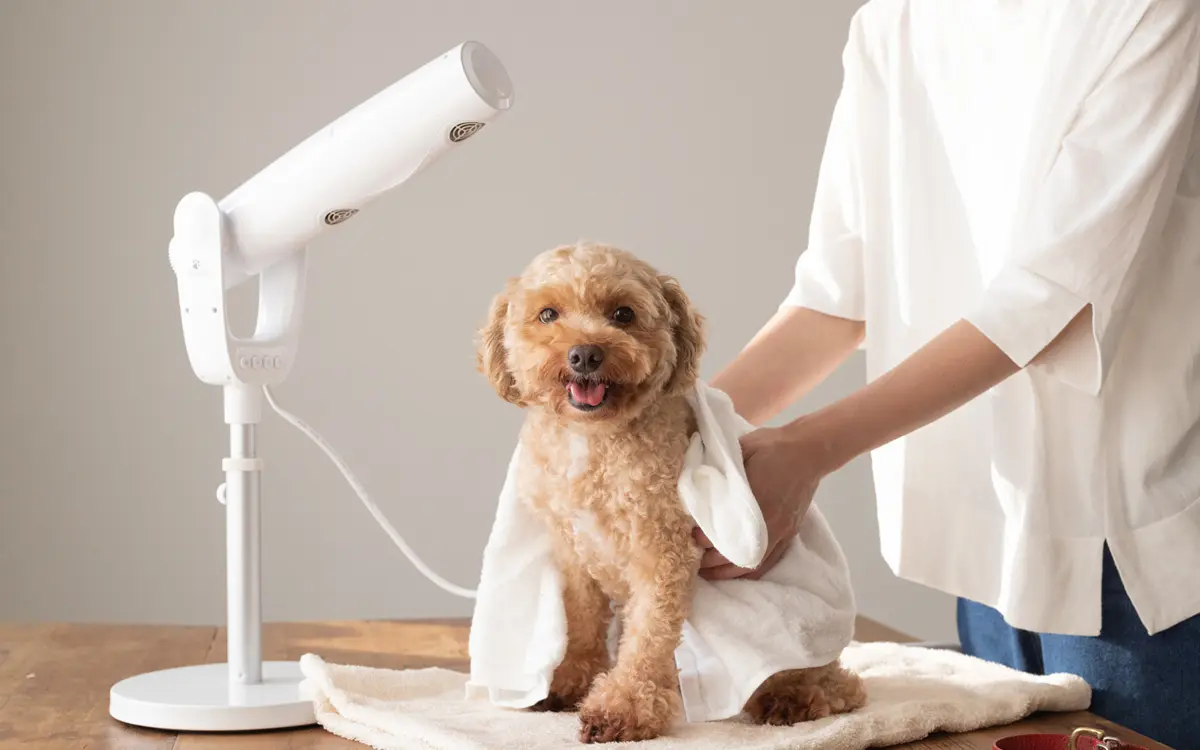 Handy type
Handy type
Difficult-to-dry areas, such as the stomach and soles, are impossible to dry. If you find that some areas are left raw when you dry them, consider using a handheld drier as well.
With a handheld dryer, you can hold it in your hand and go in and out of it freely, so you can pinpoint the spot you want to dry. Although it may be inconvenient to dry the entire body, if you keep one as a sub-dryer, it will be convenient to focus on areas that are uncontrollable to dry.
What Should I Do to Prevent My Dog from Disliking the Dryer?
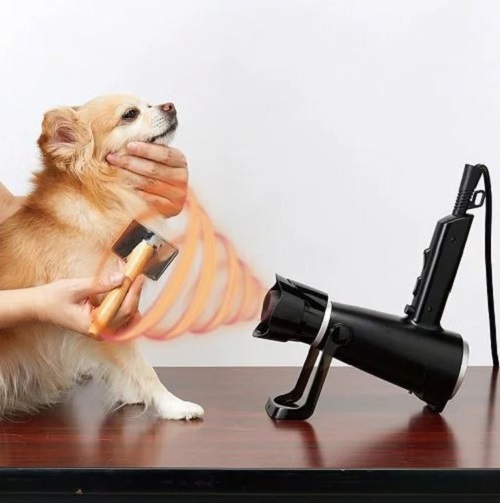 In most cases, the cause of a dog’s dislike of a hair dryer is the heat, air volume, or sound of the hair dryer. If this is a traumatic experience, they will resist during the drying process, which will increase the drying time and make them dislike the dryer more and more, which is a vicious cycle.
In most cases, the cause of a dog’s dislike of a hair dryer is the heat, air volume, or sound of the hair dryer. If this is a traumatic experience, they will resist during the drying process, which will increase the drying time and make them dislike the dryer more and more, which is a vicious cycle.
It is a vicious cycle. When drying, it is best to start with low airflow, and try to distract the dog by talking gently to it or giving it treats. When drying a dog’s face, which is a particular pet peeve, it is important to find a way to make it less bothersome for the dog by, for example, keeping an eye on the dog and holding your hand so that the wind doesn’t hit the eyes.
If your dog is really reluctant to use the hair dryer, you can reward him with treats twice, before and after drying. The association between the dryer and the treats may help remove the unpleasant image.
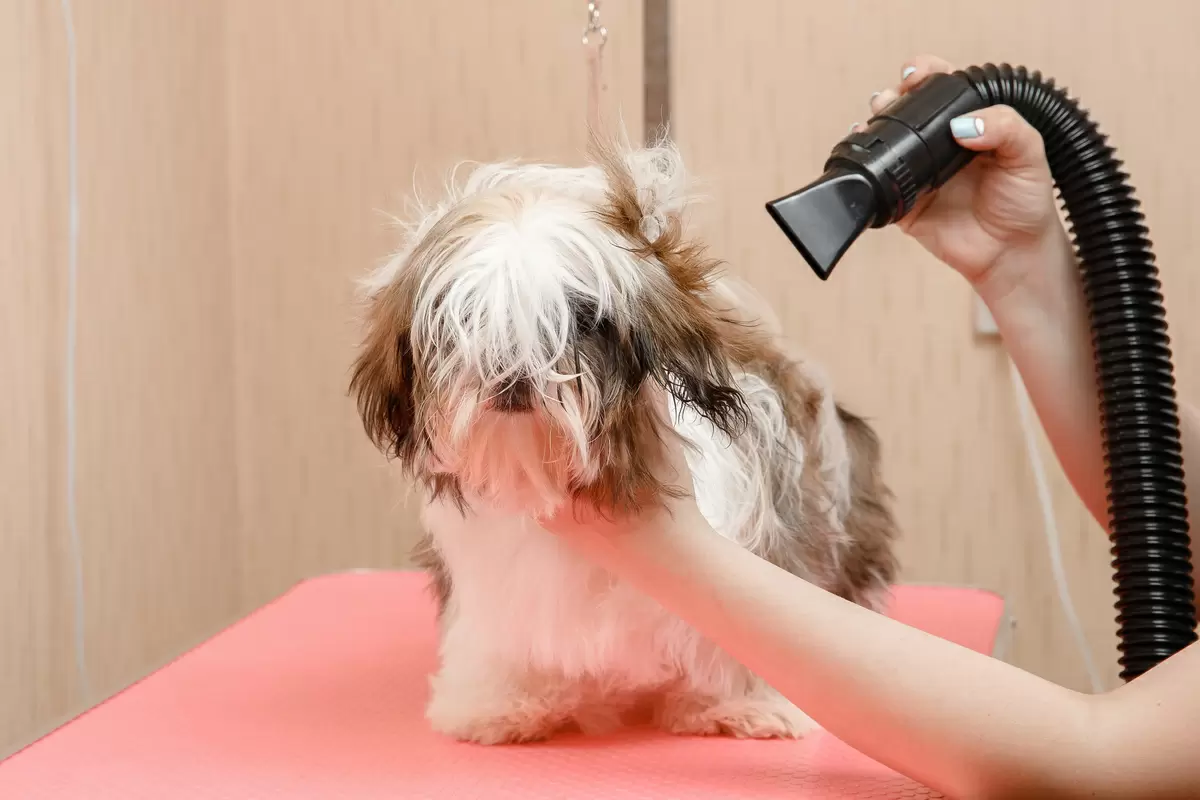
Drying a dog is all about blowing out the moisture that has gotten into the crevices of the hair, so airflow is necessary for this purpose. But the temperature of the wind should be low. And even if your dog does not like it and moves, it is important not to scold, but to speak gently to him and praise him if he stays still and patient.
